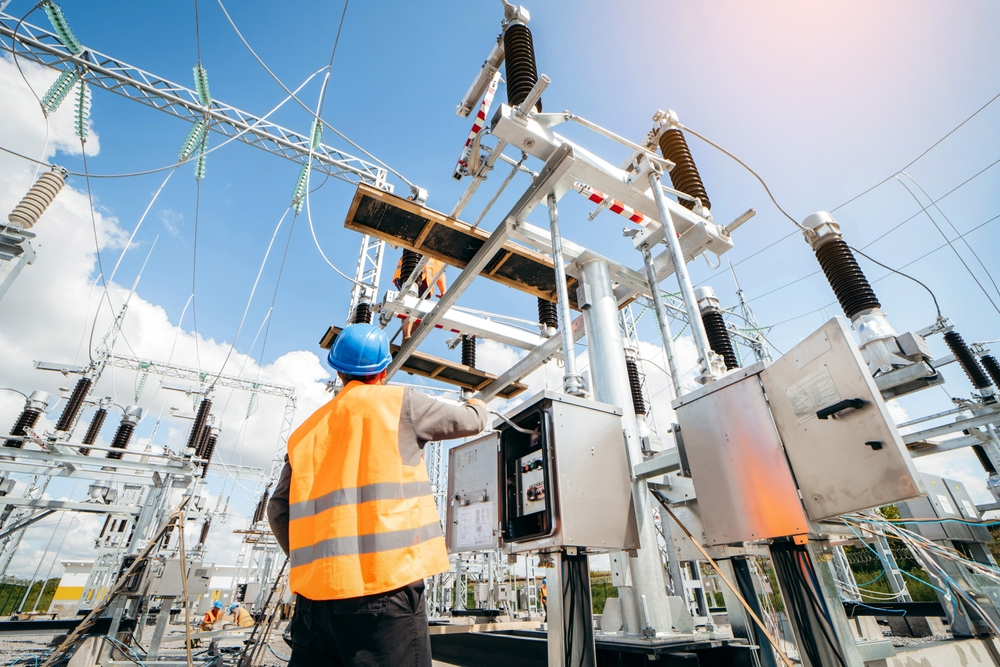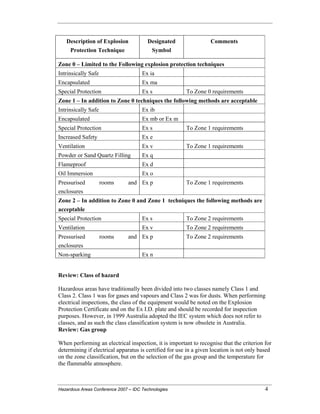The Best Strategy To Use For Roar Solutions
The Best Strategy To Use For Roar Solutions
Blog Article
The Ultimate Guide To Roar Solutions
Table of ContentsSome Known Questions About Roar Solutions.Some Known Incorrect Statements About Roar Solutions Some Known Incorrect Statements About Roar Solutions
In order to secure setups from a prospective explosion a technique of analysing and categorizing a possibly unsafe location is needed. The purpose of this is to ensure the proper choice and installation of tools to inevitably avoid a surge and to make certain security of life.
(https://dzone.com/users/5292804/roarsolutions.html)
No devices must be mounted where the surface temperature of the equipment is more than the ignition temperature of the given danger. Below are some common dust hazardous and their minimal ignition temperature level. Coal Dirt 380C 225C Polythene 420C (thaws) Methyl Cellulose 420C 320C Starch 460C 435C Flour 490C 340C Sugar 490C 460C Grain Dirt 510C 300C Phenolic Material 530C > 450C Aluminium 590C > 450C PVC 700C > 450C Soot 810C 570C The chance of the threat existing in a focus high sufficient to trigger an ignition will certainly differ from area to location.
In order to categorize this risk an installment is split right into areas of risk depending upon the quantity of time the hazardous is existing. These areas are referred to as Zones. For gases and vapours and dirts and fibres there are three areas. Zone 0 Zone 20 A harmful environment is highly likely to be existing and may exist for long durations of time (> 1000 hours annually) or even continuously Area 1 Area 21 A hazardous ambience is possible yet not likely to be existing for extended periods of time (> 10 450 C [842 F] A category of T6 indicates the minimal ignition temperature level is > 85 C [185 F] Harmful area electric devices possibly developed for use in greater ambient temperatures. This would certainly showed on the score plate e.g. EExe II C T3 Ta + 60C( This means at 60C ambient T3 will not be gone beyond) T1 T1, T2, T3, T4, T5, T6 T2 T2, T3, T4, T5, T6 T3 T3, T4, T5, T6 T4 T4, T5, T6 T5 T5, T6 T6 T6 A T Course score of T1 indicates the maximum surface area temperature level generated by the tool at 40 C is 450 C. Thinking the associated T Course and Temperature ranking for the tools are proper for the location, you can constantly utilize a tool with a more stringent Department score than needed for the area. There isn't a clear response to this question however. It truly does rely on the kind of equipment and what fixings need to be performed. Tools with specific test treatments that can not be carried out in the area in order to achieve/maintain 3rd party score. Need to return to the factory if it is prior to the equipment's solution. Area Repair Work By Authorised Employee: Challenging screening might not be required nevertheless specific procedures may require to be complied with in order for the equipment to keep its 3rd party score. Authorized workers should be used to execute the work correctly Fixing need to be a like for like substitute. New element should be taken into consideration as a straight substitute calling for no unique screening of the tools after the fixing is full. Each tool with a hazardous score should be evaluated individually. These are laid out at a high degree listed below, yet for even more thorough info, please refer straight to the guidelines.
Roar Solutions Can Be Fun For Everyone
The tools register is a thorough data source of devices documents that consists of a minimum set of fields to identify each thing's place, technological criteria, Ex-spouse category, age, and ecological information. This information is critical for tracking and handling the equipment successfully within harmful locations. On the other hand, for periodic or RBI tasting examinations, the grade will certainly be a mix of Thorough and Close assessments. The ratio of In-depth to Close inspections will be figured out by the Tools Risk, which is analyzed based on ignition danger (the chance of a source of ignition versus the possibility of a combustible ambience )and the harmful area classification
( Area 0, 1, or 2). This variant will additionally affect the resourcing needs for job preparation. Once Whole lots are specified, you can establish sampling plans based upon the example size of each Lot, which refers to the number of arbitrary devices things to be checked. To establish the required sample size, 2 facets need to be assessed: the dimension of the Lot and the group of assessment, which indicates the degree of effort that need to be applied( reduced, regular, or enhanced )to the assessment of the Lot. anonymous By combining the category of examination with the Lot dimension, you can then develop the suitable denial criteria for a sample, meaning the allowed variety of damaged products discovered within that sample. For even more information on this procedure, please refer to the Energy Institute Standards. The IEC 60079 conventional suggests that the maximum interval between assessments must not surpass 3 years. EEHA examinations will likewise be conducted beyond RBI projects as part of scheduled upkeep and devices overhauls or repair work. These inspections can be attributed toward the RBI example dimensions within the impacted Whole lots. EEHA assessments are carried out to determine mistakes in electrical tools. A heavy racking up system is vital, as a single item of equipment may have multiple mistakes, each with varying degrees of ignition risk. If the mixed score of both inspections is much less than twice the mistake rating, the Lot is regarded appropriate. If the Whole lot is still considered unacceptable, it should go through a full evaluation or reason, which might cause stricter assessment protocols. Accepted Great deal: The reasons for any kind of mistakes are determined. If a common failure setting is found, extra tools might require maintenance. Mistakes are categorized by seriousness( Safety and security, Stability, House cleaning ), making sure that urgent concerns are assessed and resolved immediately to reduce any influence on safety or procedures. The EEHA data source must track and tape-record the lifecycle of faults along with the rehabilitative activities taken. Applying a robust Risk-Based Examination( RBI )strategy is critical for making certain compliance and safety and security in managing Electrical Devices in Hazardous Areas( EEHA) (eeha courses). Automated Fault Rating and Lifecycle Administration: Easily handle mistakes and track their lifecycle to boost evaluation precision. The introduction of this support for risk-based examination better enhances Inspectivity's position as a best-in-class solution for regulative conformity, as well as for any kind of asset-centric inspection use situation. If you want discovering more, we invite you to ask for a presentation and uncover exactly how our option can transform your EEHA monitoring processes.
Fascination About Roar Solutions

In regards to eruptive threat, a hazardous location is a setting in which an eruptive ambience is existing (or might be expected to be present) in amounts that call for special precautions for the building and construction, installment and use tools. eeha certificate. In this article we discover the challenges dealt with in the workplace, the risk control actions, and the needed expertises to function safely
It is an effect of contemporary life that we produce, save or deal with a series of gases or fluids that are considered combustible, and a variety of dirts that are considered flammable. These materials can, in certain problems, develop eruptive atmospheres and these can have significant and unfortunate consequences. A lot of us are familiar with the fire triangle get rid of any one of the 3 aspects and the fire can not happen, yet what does this mean in the context of dangerous areas? When breaking this down into its most basic terms it is essentially: a mix of a specific quantity of launch or leak of a particular compound or material, mixing with ambient oxygen, and the presence of a resource of ignition.
In many instances, we can do little regarding the degrees of oxygen in the air, but we can have significant influence on sources of ignition, as an example electric tools. Unsafe locations are documented on the unsafe area category drawing and are recognized on-site by the triangular "EX-SPOUSE" sign. Here, among various other crucial details, areas are divided into 3 types depending upon the threat, the probability and period that an eruptive environment will exist; Zone 0 or 20 is considered one of the most harmful and Zone 2 or 22 is deemed the least.
Report this page